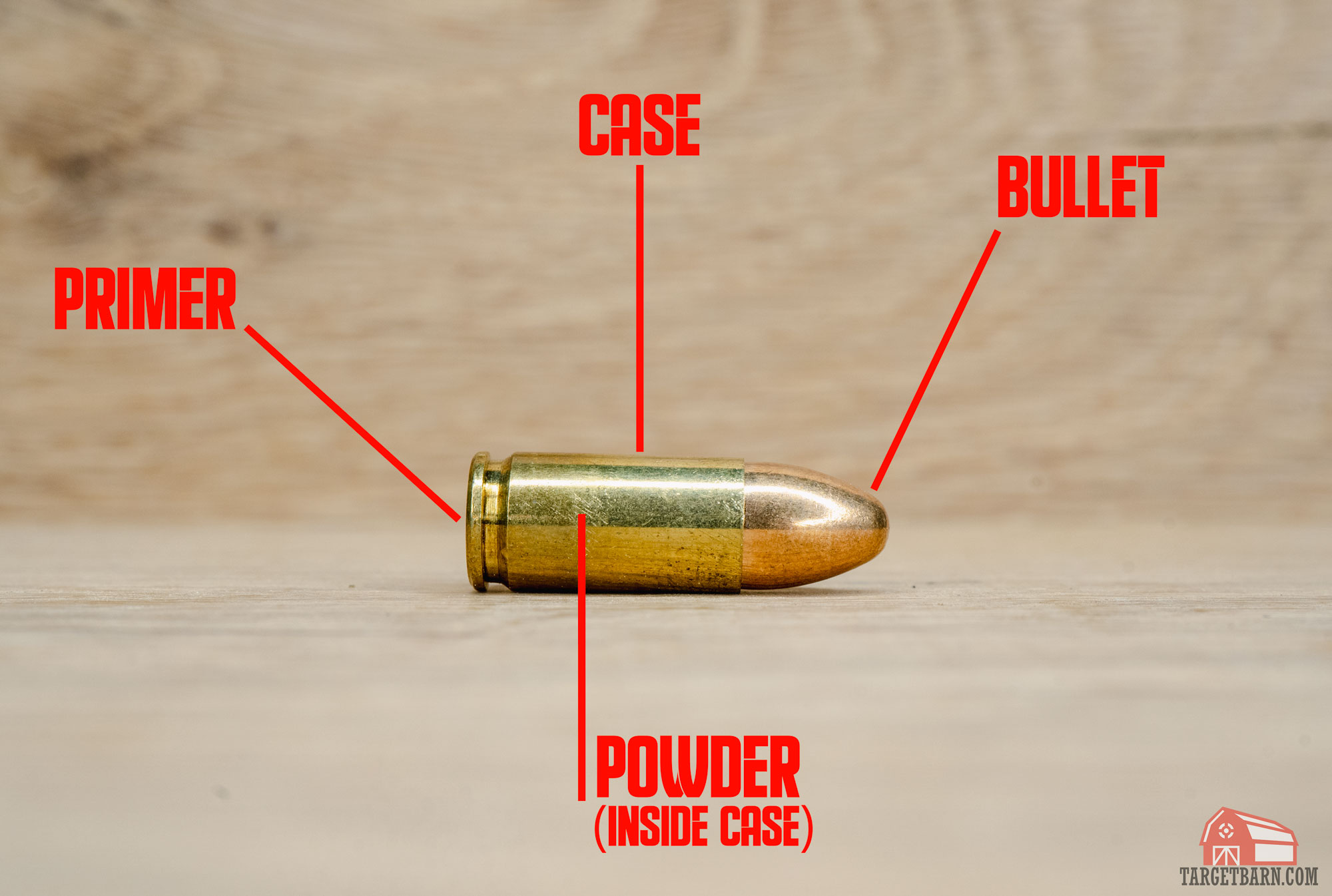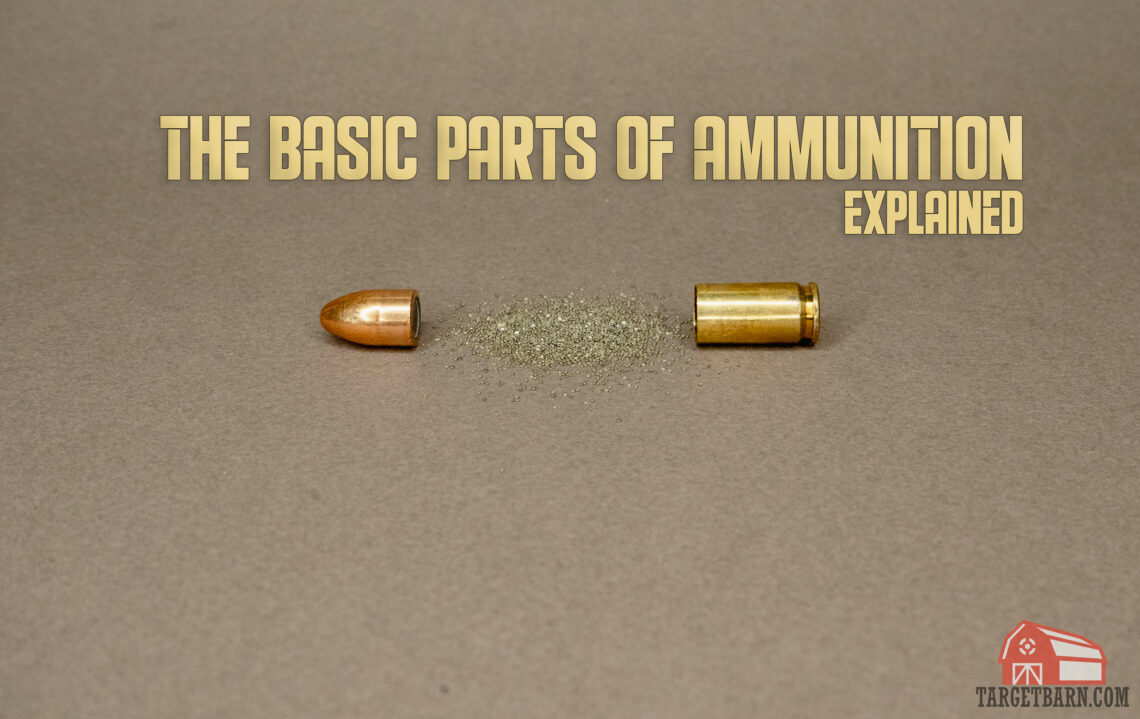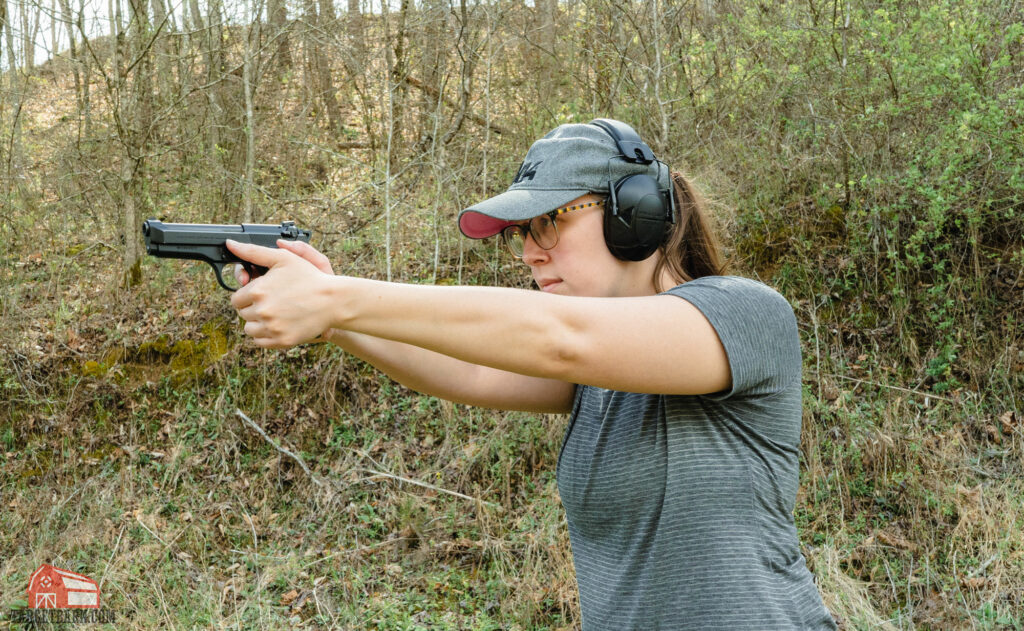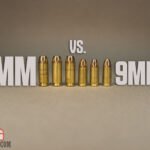The basic parts of ammunition are the same for rifle, pistol, and shotgun ammo. Knowing how ammo works is an important aspect in being a responsible gun owner. Today we’re looking at the what the basic parts of ammunition are and how they work together to fire a round.
The Basic Parts of Ammunition

The four basic parts of ammunition are:
- Case
- Primer
- Powder
- Bullet
Case
The case is a brass, aluminum, or steel container that holds all of the other ammunition components together. It houses the primer and powder. The bullet is seated in the open end of the case.
When you fire a bullet out of a semi-auto gun, the gun’s extractor lifts the case from the firing chamber and it flies out of the gun.
The case is also sometimes referred to as shells, brass, or casings. Shotgun shells are also considered a case and are usually plastic.
Primer
A gun’s firing pin strikes a cartridge’s primer. The primer is a metal cup that holds an explosive chemical compound. When the firing pin strikes the primer cap, it crushes the priming compound against the anvil. This creates a small explosion in the case that ignites the propellant.
The primer is located in the rim of the case of a rimfire cartridge. In a centerfire cartridge, the primer is in the center of the base of the case. The two common types of primers in centerfire cartridges are Berdan and Boxer primers.
Powder

Powder, also known as propellant or gunpowder, is a fast-burning chemical mixture. The primer explosion ignites it. It is usually a mixture of saltpeter, charcoal, and sulfur.
Once the propellant is ignited, it converts to a gas that creates a pressure in the case. That pressure pushes the bullet out toward your target.
Bullet or Projectile
Sometimes you’ll hear people refer to the entire ammo cartridge as a bullet, but this is technically not correct. The bullet is the actual projectile that leaves the end of your barrel and moves towards your target. Manufacturers make bullets out of a variety of materials. Some, they make entirely of lead. Others may have a copper jacket covering the lead.
In addition, there are also different styles of bullets we use for different purposes. For example, there are soft point bullets, lead round nose bullets, total metal jacket bullets, full metal jacket bullets, and jacketed hollow point bullets to name a few. Which you use will depend on what you are trying to accomplish.
We call the projectiles for shotshells, which we fire through shotguns, slugs and shot. A slug is one solid piece, usually made out of lead. Shot is a group of pellets made out of lead, steel, bismuth, or tungsten alloy. Shot pellets can come in different sizes and amounts.
Understanding the Basic Parts of Ammunition
Now that you have a basic understanding of the basic parts of ammunition, you can feel a little more confident in how your gun and ammo function!















